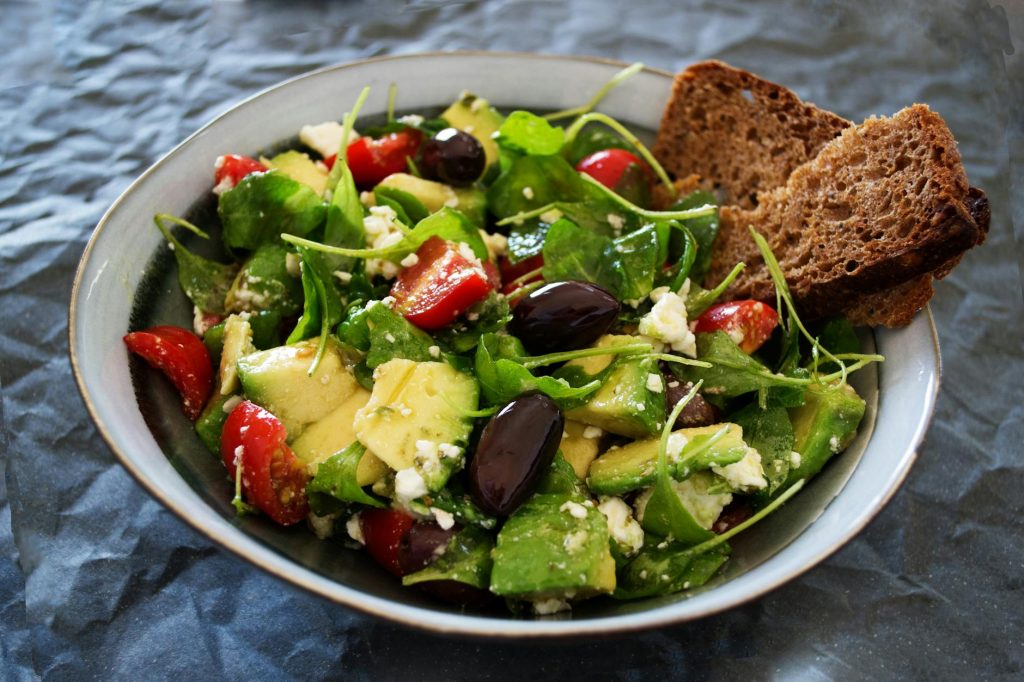
Are you feeling overwhelmed about introducing solid foods to your baby? 🍼 You’re not alone! As a new parent, navigating the world of baby nutrition can be daunting. With so much conflicting advice out there, it’s hard to know where to start.
But fear not! We’ve got you covered with our pediatrician-approved guide to the 10 Best First Foods for Baby. 🥕🍎🥑 This comprehensive list will not only ease your worries but also ensure your little one gets the best nutritional start in life. From iron-rich options to nutrient-dense vegetables, we’ll walk you through everything you need to know about creating balanced baby meals and addressing common food allergies.
Ready to embark on this exciting culinary journey with your baby? Let’s dive into the world of baby’s first foods, exploring the best options for your little one’s growing needs and setting the stage for a lifetime of healthy eating habits!
Understanding Baby’s Nutritional Needs

Key nutrients for infant growth
When introducing solid foods to your baby, it’s crucial to focus on key nutrients that support healthy growth and development. Here are the essential nutrients your baby needs:
- Iron
- Protein
- Calcium
- Vitamin D
- Omega-3 fatty acids
- Zinc
| Nutrient | Importance | Food Sources |
|---|---|---|
| Iron | Supports brain development and prevents anemia | Fortified cereals, meat, lentils |
| Protein | Builds and repairs tissues | Meat, eggs, beans, yogurt |
| Calcium | Promotes strong bones and teeth | Dairy products, leafy greens |
| Vitamin D | Aids calcium absorption | Fortified foods, sunlight exposure |
| Omega-3s | Supports brain and eye development | Fish, chia seeds, flaxseed |
| Zinc | Boosts immune system | Meat, whole grains, beans |
Signs of readiness for solid foods
Knowing when your baby is ready for solid foods is crucial. Look for these signs:
- Can sit up with minimal support
- Has good head and neck control
- Shows interest in food during family mealtimes
- Opens mouth when offered food on a spoon
- Has lost the tongue-thrust reflex
Importance of pediatrician guidance
Pediatrician guidance is invaluable when starting your baby on solid foods. Your doctor can:
- Assess your baby’s individual nutritional needs
- Provide personalized advice on food introduction
- Help identify and manage potential food allergies
- Monitor growth and development milestones
Always consult your pediatrician before making significant changes to your baby’s diet. They can offer tailored recommendations based on your baby’s specific health status and developmental progress.
Starting with Iron-Rich Foods

Benefits of iron for babies
Iron plays a crucial role in your baby’s development, particularly during their first year of life. Here are some key benefits of iron for infants:
- Supports cognitive development
- Enhances physical growth
- Boosts immune system function
- Aids in proper oxygen transportation
Best iron-rich first foods
Introducing iron-rich foods early can help prevent iron deficiency. Consider these options:
- Iron-fortified infant cereals
- Pureed meat (beef, chicken, turkey)
- Mashed cooked egg yolks
- Pureed lentils or beans
- Cooked and mashed dark leafy greens
| Food | Iron content per 100g |
|---|---|
| Iron-fortified infant cereal | 7.2 mg |
| Pureed beef | 2.7 mg |
| Cooked egg yolk | 2.7 mg |
| Lentils | 3.3 mg |
| Spinach | 2.7 mg |
Preparing iron-rich foods safely
When introducing iron-rich foods, safety is paramount. Follow these guidelines:
- Cook meats thoroughly to prevent foodborne illnesses
- Puree or mash foods to a smooth consistency to avoid choking hazards
- Introduce new foods one at a time to monitor for allergies
- Avoid adding salt or sugar to baby’s food
- Serve foods at room temperature to prevent burns
Now that we’ve covered iron-rich foods, let’s explore nutrient-dense vegetables to further diversify your baby’s diet.
Introducing Nutrient-Dense Vegetables

Top vegetable choices for babies
When introducing vegetables to your baby, it’s essential to start with nutrient-dense options that are easy to digest. Here are some top choices:
- Sweet potatoes
- Carrots
- Peas
- Spinach
- Butternut squash
- Broccoli
- Zucchini
These vegetables offer a variety of vitamins, minerals, and fiber that support your baby’s growth and development.
| Vegetable | Key Nutrients | Benefits |
|---|---|---|
| Sweet potatoes | Vitamin A, fiber | Supports eye health and digestion |
| Carrots | Beta-carotene, vitamin C | Promotes healthy skin and immune system |
| Peas | Protein, vitamin K | Aids in bone development and muscle growth |
| Spinach | Iron, folate | Supports brain development and prevents anemia |
Cooking methods to preserve nutrients
To ensure your baby gets the most nutritional value from vegetables, consider these cooking methods:
- Steaming: Preserves most nutrients and maintains texture
- Roasting: Enhances flavor while retaining vitamins
- Boiling: Use minimal water and cook for a short time
- Pureeing: Blend cooked vegetables for a smooth texture
Encouraging vegetable acceptance
Introducing vegetables early can help develop a lifelong appreciation for healthy foods. Try these tips:
- Offer a variety of colors and textures
- Pair vegetables with familiar foods
- Be patient and persistent – it may take multiple attempts
- Lead by example by eating vegetables yourself
Remember, each baby is unique, so pay attention to their preferences and consult with your pediatrician if you have concerns about their diet or nutritional intake.
Exploring Fruit Options

Best fruits for baby’s first tastes
When introducing fruits to your baby, start with mild-flavored options that are easy to digest. Here are some excellent choices:
- Bananas
- Avocados
- Pears
- Peaches
- Apples (cooked and pureed)
These fruits are not only nutritious but also have a smooth texture that’s perfect for baby’s first tastes. Remember to always prepare fruits in a way that’s appropriate for your baby’s age and eating skills.
| Fruit | Nutrients | Preparation Tips |
|---|---|---|
| Banana | Potassium, Vitamin B6 | Mash with a fork |
| Avocado | Healthy fats, Vitamin E | Mash or slice into strips |
| Pear | Fiber, Vitamin C | Steam and puree |
| Peach | Vitamin A, Vitamin C | Peel, remove pit, and puree |
| Apple | Fiber, Vitamin C | Cook until soft, then puree |
Balancing natural sugars in fruits
While fruits are healthy, they do contain natural sugars. It’s important to balance fruit intake with other food groups. Here are some tips:
- Pair fruits with vegetables or proteins
- Introduce a variety of fruits, not just sweet ones
- Avoid adding extra sugars to fruit purees or smoothies
Creative ways to serve fruits
As your baby grows, you can get creative with fruit presentations:
- Mix fruit purees into oatmeal or yogurt
- Create colorful fruit kebabs (for older babies with more developed eating skills)
- Freeze pureed fruits into popsicles for teething relief
- Blend fruits with vegetables for nutrient-packed smoothies
Now that we’ve explored fruit options, let’s move on to incorporating whole grains into your baby’s diet.
Incorporating Whole Grains

Nutritional benefits of whole grains for infants
Whole grains are an essential component of a balanced diet for infants, offering a wide range of nutritional benefits. These nutrient-dense foods provide:
- Complex carbohydrates for sustained energy
- Dietary fiber for digestive health
- B vitamins for metabolism and brain development
- Essential minerals like iron and zinc
Studies have shown that introducing whole grains early can help establish healthy eating habits and reduce the risk of obesity later in life.
Recommended whole grain options
When introducing whole grains to your baby, consider these pediatrician-approved options:
| Whole Grain | Age to Introduce | Nutritional Highlights |
|---|---|---|
| Oatmeal | 6 months+ | Iron, fiber, B vitamins |
| Brown rice | 6 months+ | Selenium, manganese |
| Quinoa | 8 months+ | Complete protein, iron |
| Barley | 8 months+ | Fiber, selenium |
| Whole wheat | 8-10 months+ | Fiber, B vitamins |
Preparing grains for easy digestion
To ensure your baby can easily digest whole grains:
- Start with single-grain cereals
- Cook grains until very soft
- Blend or puree grains for younger babies
- Gradually increase texture as your baby develops
Remember to introduce new foods one at a time and watch for any allergic reactions. As your baby grows, you can experiment with mixing different whole grains to create varied and nutritious meals.
Adding Protein Sources

Importance of protein for baby’s growth
Protein plays a crucial role in your baby’s development, supporting rapid growth and the formation of essential body tissues. As your little one reaches the 6-month mark, introducing protein-rich foods becomes vital for their overall health and well-being.
Benefits of protein for infants:
- Supports muscle and tissue development
- Aids in the production of enzymes and hormones
- Contributes to a healthy immune system
- Assists in brain development
Safe protein-rich foods for infants
When introducing protein to your baby’s diet, it’s essential to choose safe, easily digestible options. Here are some excellent protein sources for infants:
| Food | Protein Content (per 100g) | Preparation Tips |
|---|---|---|
| Egg yolk | 16g | Well-cooked, mashed |
| Greek yogurt | 10g | Plain, full-fat |
| Tofu | 8g | Soft, mashed |
| Lentils | 9g | Well-cooked, pureed |
| Chicken | 31g | Finely minced or pureed |
Introducing meat and plant-based proteins
When introducing proteins, start with small amounts and gradually increase portion sizes. Here are some tips for introducing both animal and plant-based proteins:
- Begin with iron-rich meats like beef or chicken, pureed or finely minced
- Offer well-cooked, mashed legumes like lentils or chickpeas
- Introduce soft, scrambled egg yolks (wait until 12 months for egg whites)
- Try smooth nut butters spread thinly on toast (if no family history of allergies)
Remember to introduce new foods one at a time, waiting 3-5 days between each new item to monitor for any potential allergic reactions. As your baby grows, you can gradually offer a wider variety of protein sources to ensure a balanced diet.
Dairy and Dairy Alternatives

When to introduce dairy products
Introducing dairy products to your baby’s diet is an important step in their nutritional journey. Generally, pediatricians recommend introducing dairy around 6-8 months of age, after your baby has started solid foods. However, it’s crucial to note that whole cow’s milk should not be given as a primary drink until after 12 months of age.
- 6-8 months: Start with yogurt or cheese
- 8-10 months: Introduce cottage cheese
- 12+ months: Offer whole cow’s milk as a drink
Choosing appropriate dairy options
When selecting dairy products for your baby, opt for full-fat options to support their rapid growth and development. Here’s a comparison of suitable dairy choices:
| Dairy Product | Benefits | Considerations |
|---|---|---|
| Yogurt | Rich in probiotics, easy to digest | Choose plain, unsweetened varieties |
| Cheese | Good source of calcium and protein | Offer soft, pasteurized cheeses |
| Cottage cheese | High in protein, versatile | Look for low-sodium options |
Non-dairy calcium sources for babies
For babies with dairy allergies or intolerances, or for families following a plant-based diet, there are numerous non-dairy calcium sources available:
- Leafy green vegetables (kale, spinach, collard greens)
- Fortified plant-based milks (after 12 months)
- Tofu processed with calcium sulfate
- Calcium-fortified cereals and juices
When introducing these alternatives, ensure they’re appropriate for your baby’s age and consult with your pediatrician for personalized advice. As we move forward, let’s explore how to create balanced meals that incorporate these various food groups for optimal nutrition.
Addressing Common Food Allergies

Top allergens to be aware of
When introducing solid foods to your baby, it’s crucial to be aware of common food allergens. The top allergens that parents should be cautious about include:
- Peanuts
- Tree nuts (e.g., almonds, cashews, walnuts)
- Eggs
- Milk
- Soy
- Wheat
- Fish
- Shellfish
Here’s a table summarizing these allergens and their common sources:
| Allergen | Common Sources |
|---|---|
| Peanuts | Peanut butter, baked goods, sauces |
| Tree nuts | Nut butters, baked goods, cereals |
| Eggs | Baked goods, pasta, some vaccines |
| Milk | Dairy products, baked goods, snacks |
| Soy | Tofu, soy sauce, vegetable oil |
| Wheat | Bread, pasta, crackers |
| Fish | Fresh or canned fish, fish sauce |
| Shellfish | Shrimp, crab, lobster |
Safe introduction of potential allergens
When introducing these potential allergens, it’s important to follow a systematic approach:
- Start with a small amount
- Introduce one allergen at a time
- Wait 3-5 days before introducing another potential allergen
- Offer the food in the morning to monitor reactions throughout the day
- Continue regular exposure if no reaction occurs
Recognizing signs of food allergies
Parents should be vigilant for signs of allergic reactions, which can include:
- Skin reactions (hives, rashes, swelling)
- Gastrointestinal symptoms (vomiting, diarrhea)
- Respiratory issues (wheezing, difficulty breathing)
- Anaphylaxis (severe, life-threatening reaction)
If any of these signs occur, discontinue the food immediately and consult your pediatrician. With careful introduction and monitoring, most babies can safely incorporate a wide variety of foods into their diet.
Creating Balanced Baby Meals

Combining food groups for optimal nutrition
When creating balanced meals for your baby, it’s essential to combine various food groups to ensure optimal nutrition. A well-balanced meal should include:
- Iron-rich foods
- Vegetables
- Fruits
- Whole grains
- Protein sources
By incorporating these food groups, you’ll provide your baby with a wide range of nutrients necessary for healthy growth and development. For example, you could offer pureed chicken (protein and iron) with sweet potato (vegetable) and a small amount of mashed banana (fruit).
Portion sizes for different ages
As your baby grows, their nutritional needs and portion sizes will change. Here’s a general guide for portion sizes:
| Age | Portion size per meal |
|---|---|
| 6-8 months | 2-4 tablespoons |
| 8-10 months | 3-5 tablespoons |
| 10-12 months | 4-6 tablespoons |
Remember, these are just guidelines. Always follow your baby’s hunger cues and consult with your pediatrician for personalized advice.
Sample meal plans for 6-12 month olds
Here are some sample meal plans to inspire your baby’s menu:
- Breakfast: Iron-fortified infant cereal mixed with breast milk or formula, topped with mashed banana
- Lunch: Pureed lentils with sweet potato and spinach
- Dinner: Soft-cooked ground beef with mashed avocado and cooked, mashed carrots
As your baby grows and becomes more accustomed to solid foods, you can introduce more textures and flavors. Always supervise your baby during meals and avoid foods that pose a choking hazard.
Tips for Successful Feeding
Establishing a positive mealtime environment
Creating a positive atmosphere during meals is crucial for your baby’s eating habits. Here are some tips to make mealtimes enjoyable:
- Eat together as a family
- Use colorful, child-friendly utensils
- Maintain a consistent routine
- Offer praise and encouragement
Dealing with picky eaters
It’s common for babies to be selective about their food. Here are strategies to handle picky eating:
- Be patient and persistent
- Offer a variety of foods
- Lead by example
- Make food fun and interactive
Safe food preparation and storage
Ensuring food safety is paramount when feeding your baby. Follow these guidelines:
| Aspect | Recommendation |
|---|---|
| Preparation | Wash hands and utensils thoroughly |
| Cooking | Cook foods to appropriate temperatures |
| Storage | Refrigerate leftovers promptly |
| Reheating | Heat foods evenly and check temperature |
When to seek professional advice
While most feeding issues resolve on their own, sometimes professional help is needed. Consult a pediatrician if:
- Your baby consistently refuses food
- There are signs of allergic reactions
- You notice significant weight loss or gain
- There are persistent digestive issues
Remember, every baby is unique, and it’s normal to face challenges during the feeding journey. With patience and consistency, you can help your baby develop healthy eating habits that will last a lifetime.

Embarking on your baby’s solid food journey can be both exciting and daunting. By introducing a variety of nutrient-rich foods, you’re setting the foundation for healthy eating habits that will benefit your little one for years to come. From iron-fortified cereals to colorful vegetables, fruits, whole grains, and protein sources, each food group plays a vital role in your baby’s growth and development.
Remember, every baby is unique, and it’s essential to follow their cues and consult with your pediatrician throughout the process. By offering a diverse range of flavors and textures, staying vigilant about potential allergies, and creating balanced meals, you’re nurturing not just your baby’s body but also their relationship with food. Embrace this new chapter with patience and enthusiasm, knowing that you’re giving your child the best possible start in their culinary adventure.





